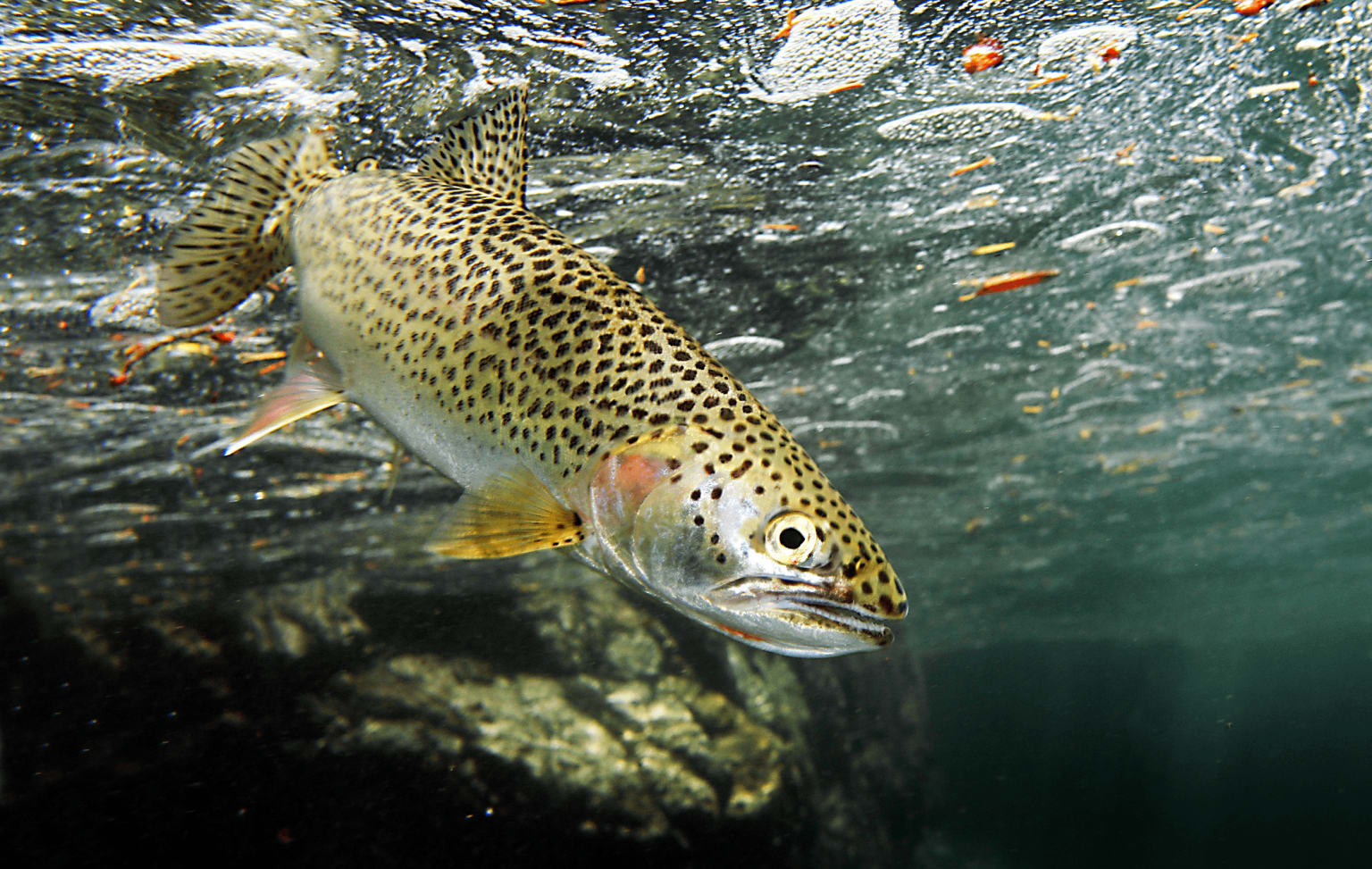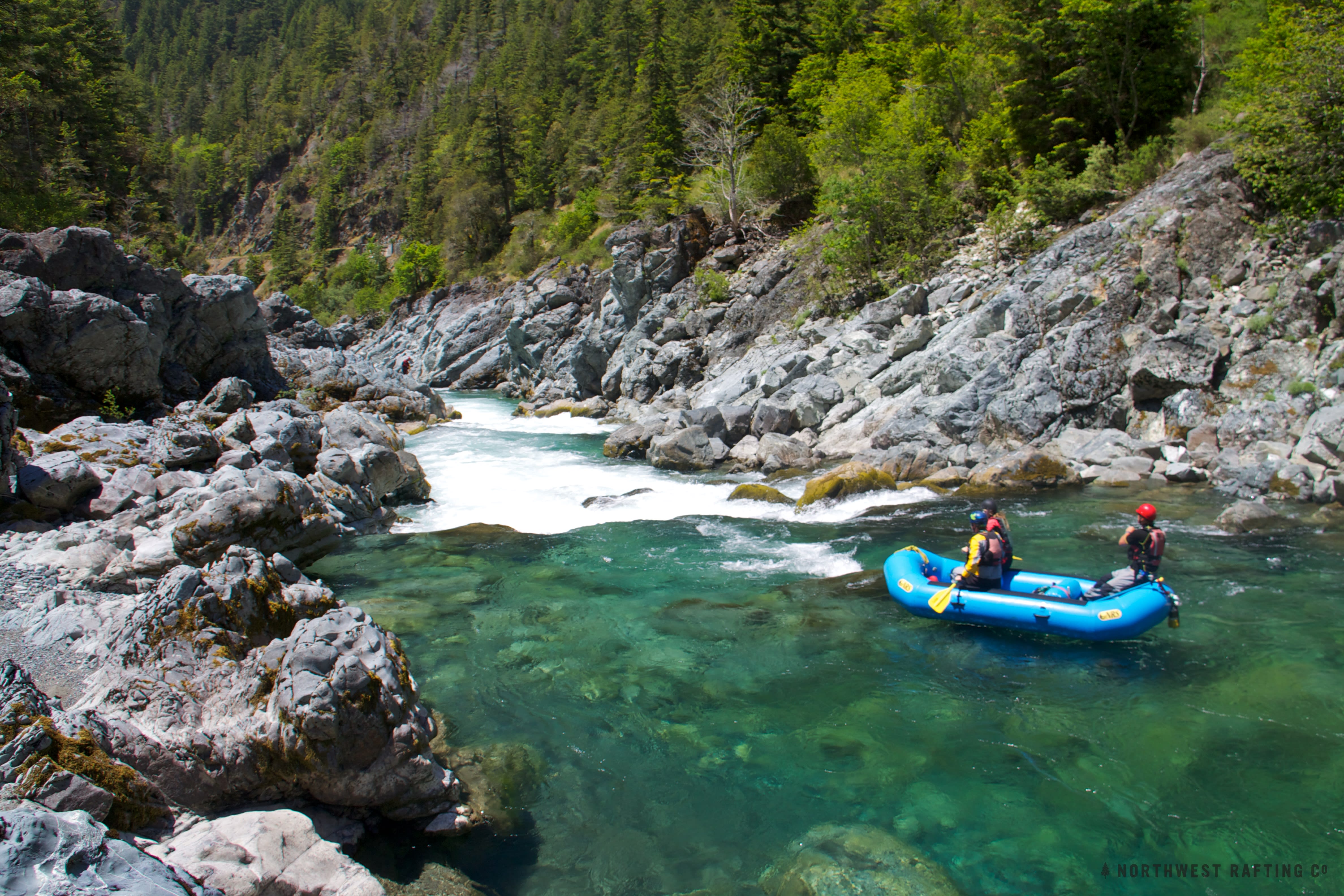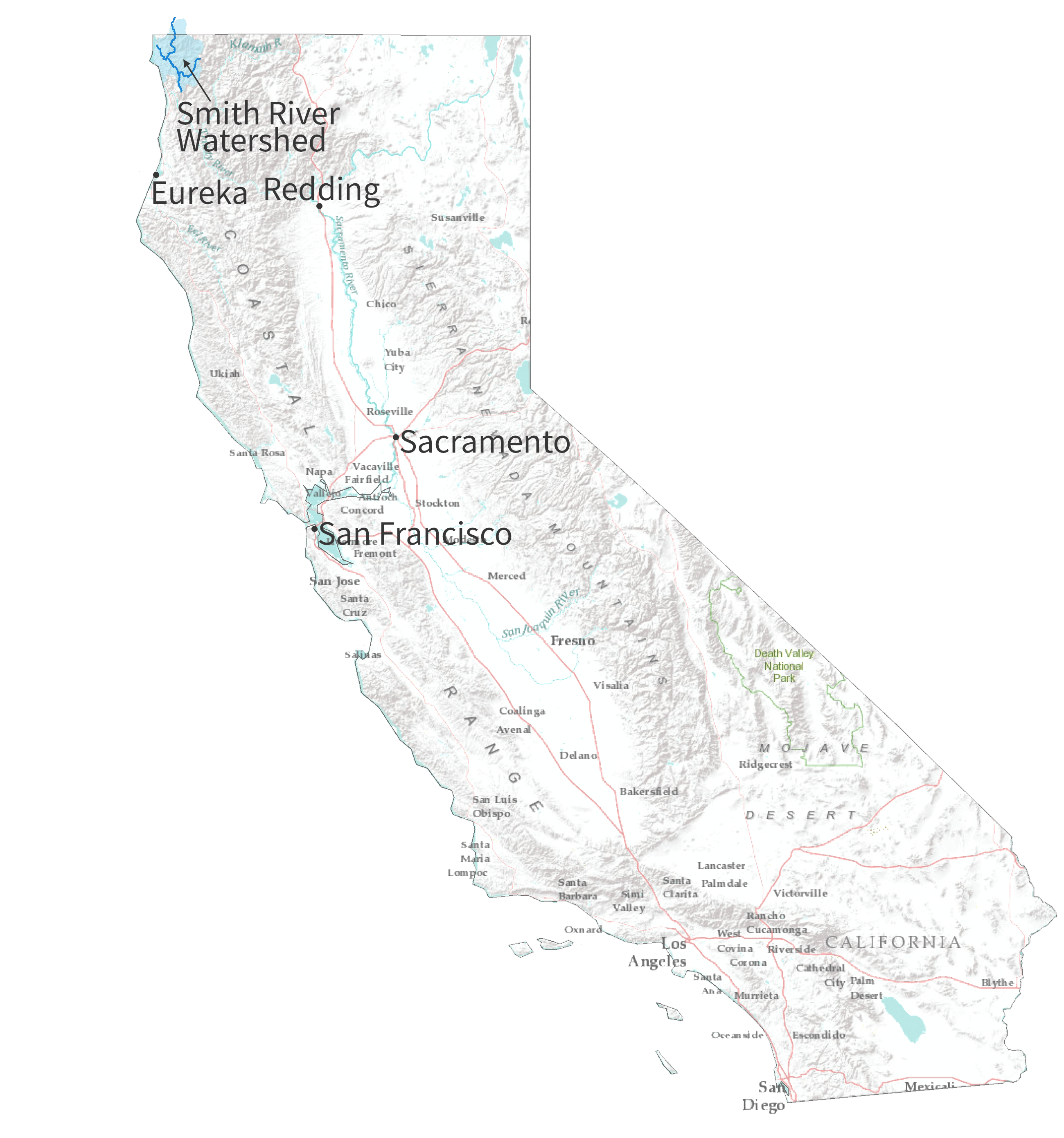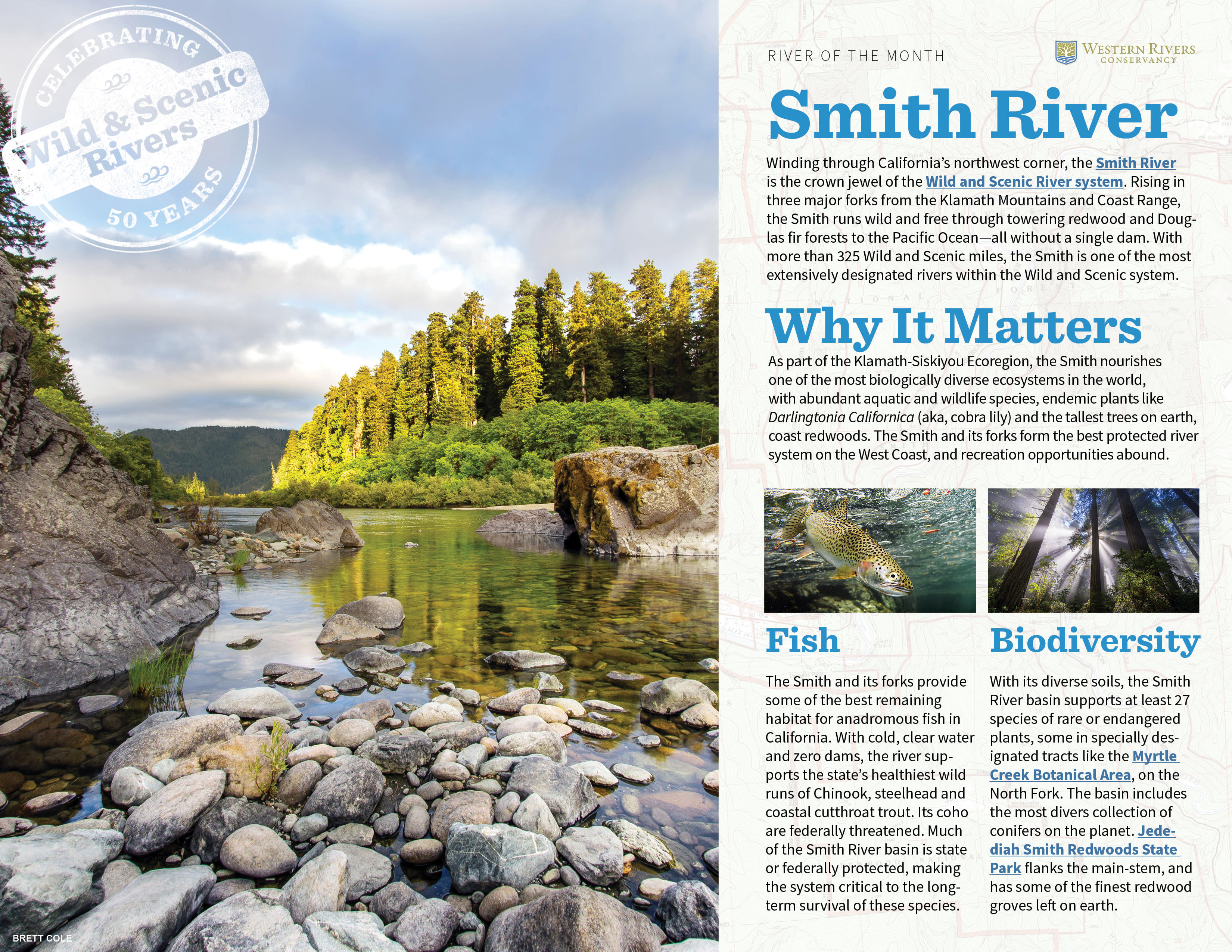
Fish
The Smith and its forks provide some of the best remaining habitat for anadromous fish in California. With cold, clear water and zero dams, the river supports the state’s healthiest wild runs of Chinook, steelhead and coastal cutthroat trout. Its coho are federally threatened. Much of the Smith River basin is state or federally protected, making the system critical to the long-term survival of these species.

Wildlife
With its diverse soils, the Smith River basin supports at least 27 species of rare or endangered plants, some in specially designated tracts like the Myrtle Creek Botanical Area, on the North Fork. The basin includes the most diverse collection of conifers on the planet. Jedediah Smith Redwoods State Park flanks the main-stem, and has some of the finest redwood groves left on earth.
-
Paddle
The Smith offers outstanding float trips for paddlers of all levels, from easy family floats on the lower river to Class IV and V mayhem on the upper forks. Northwest Rafting Co.’s Smith River pages and the Whitewater Guidebook are excellent resources.
-
Swim
Grab a snorkel and plunge into the deep, turquoise pools of the Smith. Join the Smith River Alliance (see The WRC Story, right) for volunteer-powered fish counts each summer that help the organization monitor native fish runs.
-
Hike
Trails abound. To start your research, visit the Forest Service’s Smith River National Recreation Area page. Want something easy? Stroll the Darlington Trail for a glimpse of the rare, carnivorous cobra lily.
-
Fish
Chinook, steelhead and sea-run cutthroat fishing are all excellent. The best access for bank anglers is along the seven-mile stretch of the Smith that is traced by Highway 197. Venture up Highway 199 for other river access trails to more secluded fishing.
The WRC Story
Western Rivers Conservancy helped secure the health of the Smith River by protecting Goose Creek, one of the most important sources of cold water for the entire system. Even in times of drought, Goose Creek delivers cold, clear water into the South Fork Smith, water that is critical to the Smith’s wild runs of Chinook, steelhead and coastal cutthroat trout. Our efforts conserved 9,500 acres—nearly the entire Goose Creek watershed—and protected 13 miles of river frontage. Goose Creek is now permanently preserved and managed as part of the Smith River National Recreation Area, where it remains a haven for wild salmon, steelhead, native trout and other imperiled aquatic species. The Smith River Alliance and Cal Trout were our partners in this effort.


Best Time of Year
- Salmon fishing
- Sep-Dec
- Trout fishing
- Fall
- Steelhead
- Dec-Apr
- Boating
- Nov-Apr
- Swimming
- Summer


